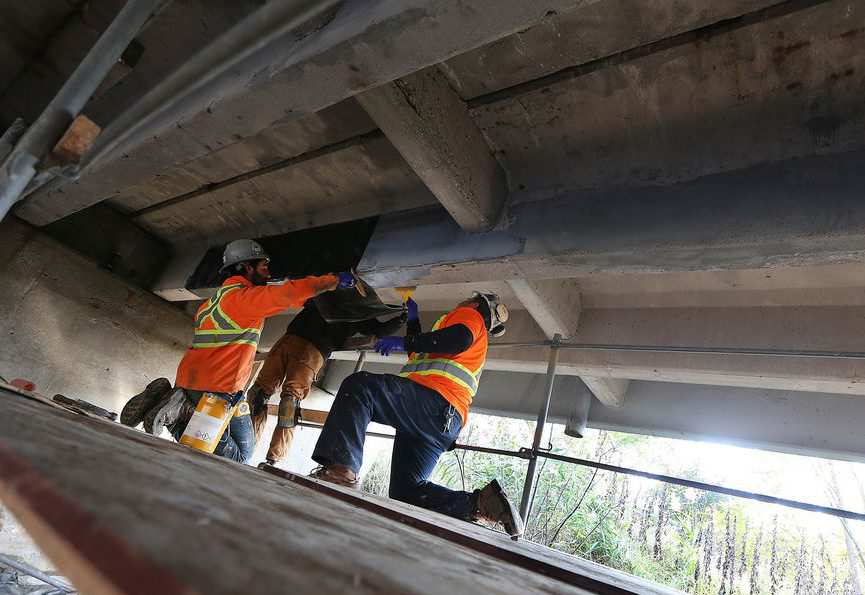
It could be another five years or more before University of Windsor engineering professor Sreekanta Das can start handing out the grades for his students’ latest school project.
“Five years for sure,” Das said of the time needed to definitively prove whether a revolutionary construction material can provide a cheaper and greener solution to future concrete and steel rehabilitation projects.
“In the lab, it worked perfect,” said Das, who teaches civil and environmental engineering.
After years of applying a new basalt composite material to bridge-building materials made artificially deficient in a laboratory setting, Das and a research team of graduate students have partnered with the County of Essex and MEDA Engineering and Technical Services to test their theories and product in the real world.
After building artificially damaged concrete beams to test out the new material at the university, civil engineering masters student Jason Duic said it was great to be able to apply what’s been learned so far on something real.
The Merrick Creek Bridge — built with T-beam concrete pre-stressed girders on County Road 8 just west of Howard Avenue — is being rehabilitated and strengthened using a basalt-based fibre mesh wrapped around spot repairs.
MEDA president David Lawn said the new material is stronger and lasts longer than the carbon fibre-based material that would otherwise be used to fix such concrete-clad spans. And the mesh fabric material made of basalt — a commonly occurring volcanic rock — is 30 to 40 per cent cheaper, he said.
“I’m 100 per cent optimistic this will be here for the life of the bridge,” said Lawn. “This material is rock — it will last forever.”
Read the full story at the windsorstar.com
Story by Doug Schmidt, the Windsor Star. Published Nov. 16, 2016.
dschmidt@postmedia.com
twitter.com/schmidtcity
